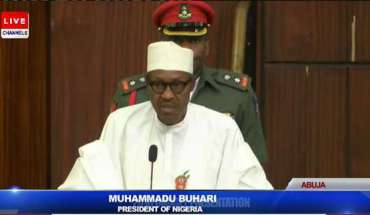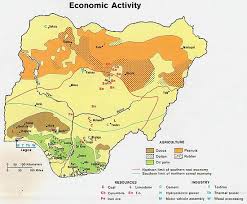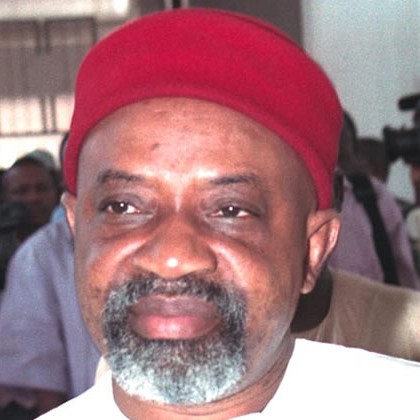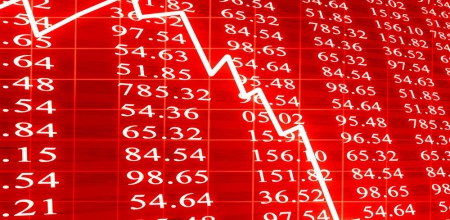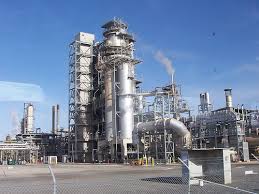
-
Investment in social welfare, infrastructure to drive growth
Renowned global audit firm, Pricewaterhousecooper in its recent forecast on the performance of the Nigerian economy in 2016, said with a lot of uncertainty surrounding the economy, it will struggle to grow at 4.0 per cent of Gross Domestic Product (GDP). “Our economists have developed three economic scenarios to help public and private sector organisations prepare for an uncertain environment in 2016.
In these scenarios, we explored two types of shocks: an oil price shock and a political shock. “We expect that even under a benign economic scenario, the Nigerian economy will struggle to realise any growth much higher than 4.0 per cent.
Nigeria’s economy has tended to suffer following an oil price crash, although its resilience has improved in more recent times. Getting the policy response right matters as falling economic growth imposes a real ‘human’ cost on the population,” PWC said in its recent 2015/2016 World Economic Outlook.
This is coming as the International Monetary Fund (IMF) recently cut Nigeria’s GDP growth forecast for 2016, to 4.0 per cent growth rate as the country continues to contend with the challenge of declining income from the drop in crude oil prices.
The latest growth forecast by the fund is 2.25 percentage points lower than its last year’s projection for Nigeria. The multilateral donor agency stated this in its 208-page World Economic Outlook (WEO) titled: “Adjusting to Lower Commodity Prices”, released in Washington DC, recently.
Continuing, the IMF stated that it anticipated growth in sub-Saharan Africa to also slow this year to 3.8 per cent, from 5 per cent in 2014. Similarly, it forecast that growth in lowincome developing countries would also fall to 4.8 per cent this year, more than one percentage point weaker than in 2014, before picking up to 5.8 per cent in 2016. But the IMF pointed out that its projections for the low-income countries would be shaped by the outlook for sub-Saharan economies, “in particular Nigeria; the resilient growth in low-income developing countries in Asia, particularly Bangladesh and Vietnam.”
Taking a cue from the IMF, FocusEconomic panellists, say although Nigeria continues to suffer from low oil prices and internal security threats, a more stable political environment and increased government spending on social welfare and infrastructure are expected to support growth in 2016. FocusEconomics panellists expect the country to grow 4.1 per cent in 2016, which is down 0.3 percentage points from last month’s forecast. For 2017, the panel expects the Nigerian economy to accelerate and expand 4.5 per cent.
In November, consumer prices increased 0.7 per cent over the previous month, which was above October’s 0.4 per cent increase. According to the National Bureau of Statistics, the month-on-month increase in prices accelerated in November across all the sub-components of the index, with education being the only exception. It will be recalled that Nigeria’s inflationary rate rose from 9.3 per cent in October to 9.4 per cent in November, which marked the highest rate since February 2013. As a result, annual average inflation inched up from October’s 8.8 per cent to 8.9 per cent in November, thereby reaching a 25-month high.
Core consumer prices, which exclude farm produce and energy prices, rose 0.6 per cent in November over the previous month, overshooting October’s 0.4 per cent increase. Core inflation inched down from October’s 8.6 per cent to 8.5 per cent in November.
FocusEconomics Consensus Forecast panellists expect inflation to average 9.5 per cent in 2016, which is unchanged from last month’s forecast. For 2017, the panellists forecast an inflation rate of 8.5 per cent. In November, the Business Sentiment Indicator (BSI) developed by MNI Indicators and Standard Chartered Bank fell from October’s 65.3 to 62.6. October’s print had marked the highest reading so far this year. Despite the decline, the indicator continues to rest comfortably above the 50-threshold that separates contraction from expansion in business conditions. November’s drop mainly reflects declines in production and new orders. On the other hand, the order backlogs, employment and supplier delivery times’ categories recorded an improvement. Regarding foreign exchange developments, the BSI survey reported that: “Given the Central Bank of Nigeria’s (CBN’s) monetary policy easing at its meeting on November 24, 2015, which suggests no imminent change to the current FX regime, the ‘effect of the naira exchange rate reading’ will likely continue to be a concern for Nigerian businesses in the coming months.”
The FocusEconomics Consensus Forecast panellists, who also expected gross fixed investment growth to reach 6.1 per cent in 2015, forecasting an expansion of 5.0 per cent in 2016. Sunday Telegraph recalls that the Central Bank Governor, Godwin Emefiele had at the end of its Monetary Policy Committee meeting in July warned that the economy could slip into recession in 2016, saying the liquidity withdrawals following the implementation of the Treasury Single Account (TSA), elongation of the tenure of state governments’ loans as well as loans to the oil and gas sectors could aggravate liquidity conditions in banks and impair their financial intermediation role, thus affecting economic growth, “unless some actions were immediately taken to ease liquidity conditions in the markets.”
For an economist lecturer at the Bayero University, Kano, Stanley Oronsaye, the plan to source over 40 per cent of “our borrowings from abroad may be overly optimistic considering our current forex regime which is not so palatable to foreign investors. “I foresee a major challenge to be its welfare thrust; paying N5000 to the vulnerable, a meal a day to school children and the plan to recruit 500,000 teachers. At minimum wage, the new teachers will gulp about N1.1 trillion (that is at N18, 000 monthly).”
But the Lagos Chamber of Commerce and Industry (LCCI), has painted an admixture of a cautious optimism for the economy on the one hand, and a bleak outlook on the other for 2016. LCCI Director General, Alhaji Muda Yusuf, said while it posits that the N300 billion projected funding of the Small and Medium Scale Enterprises (MSMEs) by the commercial banks would boost lending to the sector, grow agriculture and create employment as well as increase the chances of Nigeria’s foreign exchange earnings in non oil export, its thoughts on declining global oil prices and its consequence on government’s revenue, as well as firms honouring contractual obligations to their financiers, were bleak, suggesting that the economy may yet tread a turbulent trajectory in 2016. In his recent statement, entitled: ‘Economic and Business Review in 2015 and Perspective for 2016’, Alhaji Yusuf said:
“The targeted N300 billion by the Nigerian banks to boost lending to Small and Medium Scale Enterprises (SMEs) and the agriculture sector in 2016 will boost SMEs development and employment.” But nonetheless he observed that the declining international spot oil price and its fallout will create unease for the economy in the coming year.

